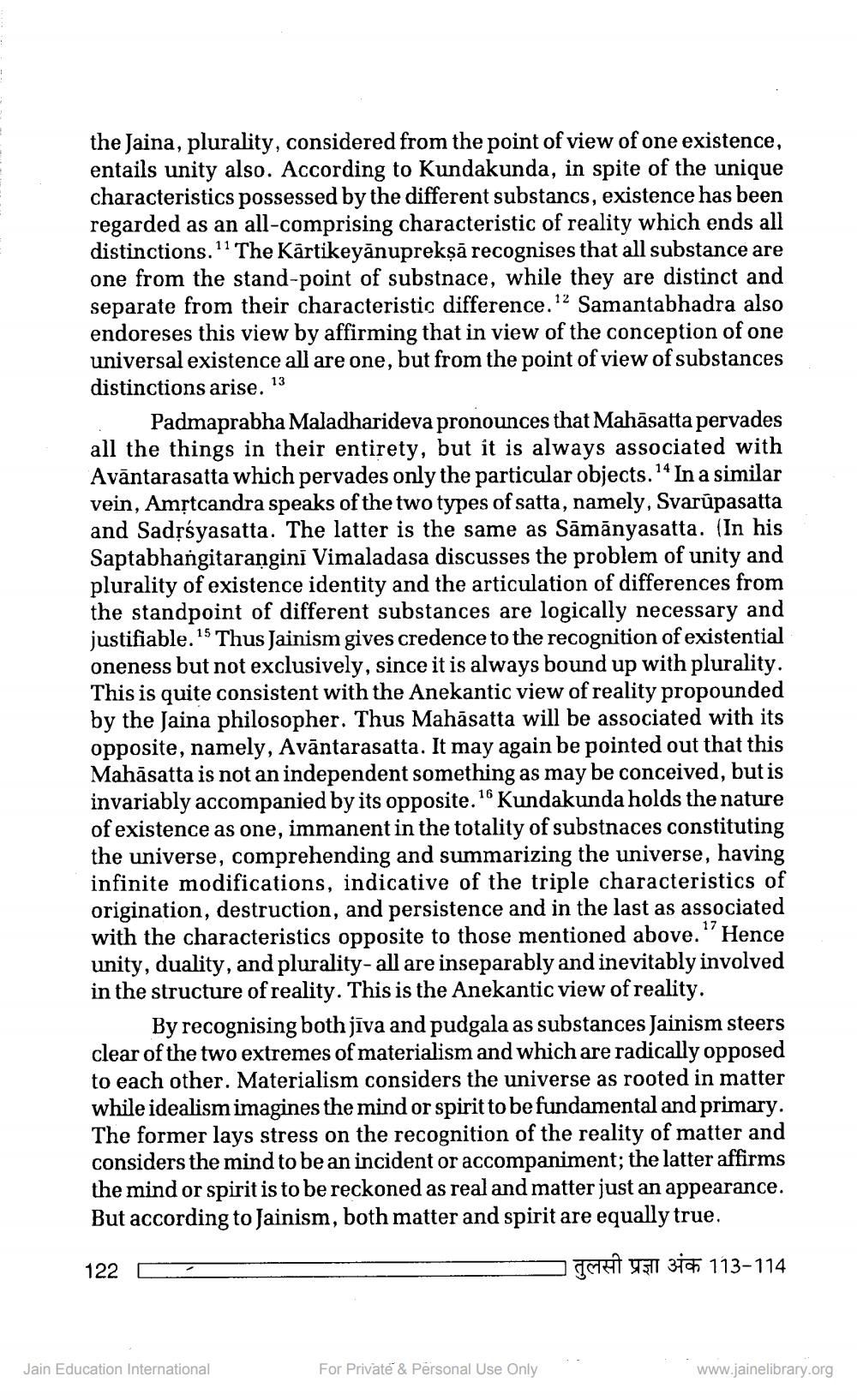________________
the Jaina, plurality, considered from the point of view of one existence, entails unity also. According to Kundakunda, in spite of the unique characteristics possessed by the different substancs, existence has been regarded as an all-comprising characteristic of reality which ends all distinctions. 11 The Kārtikeyānuprekṣā recognises that all substance are one from the stand-point of substnace, while they are distinct and separate from their characteristic difference. 12 Samantabhadra also endoreses this view by affirming that in view of the conception of one universal existence all are one, but from the point of view of substances distinctions arise. 13
Padmaprabha Maladharideva pronounces that Mahāsatta pervades all the things in their entirety, but it is always associated with Avāntarasatta which pervades only the particular objects. 14 In a similar vein, Amộtcandra speaks of the two types of satta, namely, Svarūpasatta and Sadrśyasatta. The latter is the same as Sāmānyasatta. (In his Saptabhangitarangini Vimaladasa discusses the problem of unity and plurality of existence identity and the articulation of differences from the standpoint of different substances are logically necessary and justifiable.15 Thus Jainism gives credence to the recognition of existential oneness but not exclusively, since it is always bound up with plurality. This is quite consistent with the Anekantic view of reality propound by the Jaina philosopher. Thus Mahāsatta will be associated with its opposite, namely, Avāntarasatta. It may again be pointed out that this Mahāsatta is not an independent something as may be conceived, but is invariably accompanied by its opposite.16 Kundakunda holds the nature of existence as one, immanent in the totality of substnaces constituting the universe, comprehending and summarizing the universe, having infinite modifications, indicative of the triple characteristics of origination, destruction, and persistence and in the last as associated with the characteristics opposite to those mentioned above." Hence unity, duality, and plurality-all are inseparably and inevitably involved in the structure of reality. This is the Anekantic view of reality.
By recognising both jīva and pudgala as substances Jainism steers clear of the two extremes of materialism and which are radically opposed to each other. Materialism considers the universe as rooted in matter while idealism imagines the mind or spirit to be fundamental and primary. The former lays stress on the recognition of the reality of matter and considers the mind to be an incident or accompaniment; the latter affirms the mind or spirit is to be reckoned as real and matter just an appearance. But according to Jainism, both matter and spirit are equally true.
122 D
To
W511 312 113-114
Jain Education International
For Private & Personal Use Only
www.jainelibrary.org




